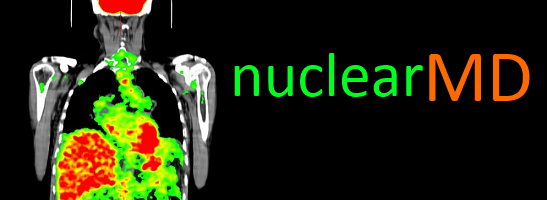Lewy Body Disease
An 84 year old African American male with long history of memory difficulty and visual hallucinations, as well as, legal blindness presented to clinic for follow up. He has REM sleep behavior with occasional confusion and agitation during his sleep. His memory seemed to be stable for quite some time per his family. However, upon starting Aricept his visual hallucinations worsened. Aricept was subsequently discontinued. A head CT showed mild subcortical chronic ischemic in the subinsular region bilaterally. Dystrophic calcifications were noted in the right globe and along the right retina. Left scleral band was noted. A PET CT of the brain was ordered suspecting lewy body disease (LBD).
The F-18 FDG Brain PET-CT images show mild age appropriate atrophy with mildy decreased metabolism in the bilateral posterior temporo-parietal lobes and severely decreased metabolism in the bilateral occipital lobes. Normal metabolic activity is present within the frontal lobes, cerebellum, and the subcortical nuclei. These findings are highly suggestive of Lewy body disease (1). After Alzheimer’s disease, Lewy body disease is the second most common cause of senile degenerative dementia. Common symptoms include progressive cognitive dysfunction, psychotic symptoms (mainly visual hallucinations), parkinsonian motor signs (especially rigidity), and rapid cognitive fluctuations(2).

Clinical criteria Lewy body dementia has been delineated to allow clinical diagnosis (3). The clinical criteria provide excellent specificity (90–97%), but are lacking in sensitivity (only 22–75%) (4). Progressive debilitating mental impairment progressing to dementia is characteristic, however, this is common in many dementias. Impairments in attention, problem solving and visuospatial difficulties are early manifestations. Features which are helpful in differentiating Lewy body disease from Alzheimer’s disease include: fluctuations in cognitive function, spontaneous motor features of parkinsonism, and marked visual hallucinations (4). Previously autopsy was relied upon for the definitive diagnosis.
In this patient the diminished occipital uptake is likely due to Lewy body disease and not due to orbital pathology. A prior study performed on eight patients with congenital homonymous hemianopsia (seven with damage to optic radiations and one with optic tract abnormality; all with largely intact occipital cortex), showed minimal abnormalities in the resting visual cortex glucose metabolism of the “pathologic” visual cortex (5).
1. Mettler F., Guiberteau M. Essentials of Nuclear Medicine Imaging. 2006. p391
2. Mirzaei S, et al. Assessment of diffuse Lewy body disease by 2-[18F] fluoro-2-deoxy-D-glucose positron emission tomography (FDG PET). BMC Nucl Med. 2003 Feb 20. doi: 10.1186/1471-2385-3-1.
3. McKeith IG, et al. Consensus guidelines for the clinical and pathologic diagnosis of dementia with Lewy bodies (DLB): report of the consortium on DLB international workshop. Neurology. 1996;47:1113–1124.
4. Ransmayr G, et al. Demenz mit Lewy-Körperchen. Nervenarzt. 2000;71: 929–935. doi: 10.1007/s001150050689.
5. Bosely TM, et al. Neuro-imaging and positron emission tomography of congenital homonymous hemianopsia. Am J Opthalmol. 1991 Apr 15; 111(3): 413-8.
This case was compiled by Bradley J. Potsic M.D, BCM
